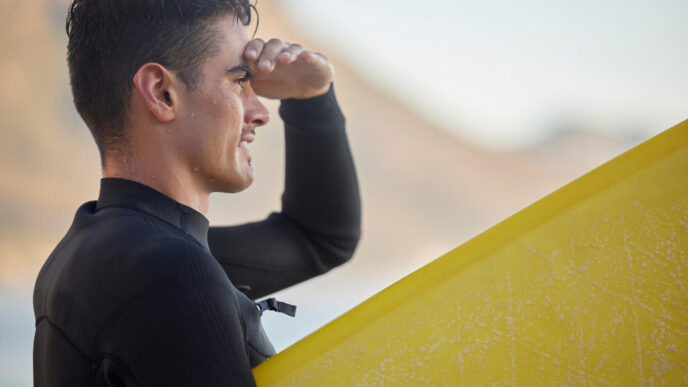Why Creative Thinking Belongs in Daily Life
Creativity Isn’t Reserved for Artists
When people hear the word creativity, they often picture painters, musicians, or writers. But creativity goes far beyond artistic expression—it’s a powerful tool for solving everyday problems, finding joy in routine, and navigating life’s challenges with flexibility.
From organizing your home to responding to emails at work, every part of your day holds the potential for creative engagement. You don’t need special talent or a dramatic shift in lifestyle—you just need to shift how you think about the ordinary.
“Creativity is intelligence having fun.”
Albert Einstein
Small Shifts, Big Results
You don’t have to radically change your life to see results. Simple adjustments—like viewing chores as games, or approaching routines with curiosity—can spark inspiration and make life more fulfilling. Research shows that creative thinking boosts mental well-being, motivation, and even job satisfaction.
And when creativity becomes a daily habit, it begins to influence everything: how you manage your time, how you handle stress, and how you connect with others. It’s not just about productivity—it’s about adding color to the gray zones of your day.
From Boredom to Brilliance
We often look at boring tasks as mental dead zones. But what if they were actually hidden creative opportunities? What if folding laundry or commuting became your daily creativity workout? That’s exactly what this article explores.
You’ll learn how to:
✔️ Use simple tools and techniques to spark fresh ideas
✔️ Make boring tasks fun and mentally engaging
✔️ Boost your creativity without overhauling your routine
This isn’t about working harder—it’s about thinking smarter and enjoying more. Ready to find creativity in the places you least expect it? Let’s begin.
The Science of Creativity
How the Brain Generates Creative Ideas
Creativity is not a magical gift—it’s a cognitive process involving multiple brain regions. Neuroscientists have identified three key networks responsible for creative thinking:
| Brain Network | Function in Creativity |
|---|---|
| Default Mode Network (DMN) | Generates spontaneous ideas and daydreams |
| Executive Control Network (ECN) | Evaluates and refines creative ideas |
| Salience Network | Switches between idea generation and critical thinking |
When engaging in a creative task, the brain rapidly shifts between these networks, balancing free thinking with logical assessment. This is why creative breakthroughs often happen when the mind is relaxed rather than actively focused on a problem.
The Role of Boredom in Creativity
Boredom is often seen as something negative, but studies suggest that periods of boredom can significantly boost creativity. When the brain is not actively engaged in a specific task, it starts forming unexpected connections, leading to new insights.
🔹 A 2014 study from the University of Central Lancashire found that people who engaged in a boring task (like copying phone numbers) performed better on creative problem-solving tests afterward.
🔹 Many famous thinkers—like Steve Jobs and J.K. Rowling—credited their best ideas to moments of idleness.
How to Use Boredom for Creativity:
- Allow yourself time without distractions (no phone, no social media).
- Engage in low-stimulation activities (walking, showering, or doodling).
- Let your mind wander freely without pressure to “be productive.”
✅ Key Takeaway: Creativity isn’t about forcing ideas but giving your brain space to form new connections.

Mindset Shift: Reframing the Mundane
Seeing the Ordinary Through a New Lens
Creativity thrives when we change the way we perceive everyday tasks. The difference between a boring routine and an engaging activity often lies in perspective. Instead of viewing mundane tasks as tedious obligations, approach them as opportunities for experimentation, problem-solving, or storytelling.
🔹 Example: Instead of mindlessly washing dishes, imagine you’re a scientist testing the perfect water-to-soap ratio for maximum efficiency.
🔹 Example: If you commute to work the same way every day, challenge yourself to notice five new details about your surroundings each morning.
A slight change in mindset can make routine activities feel fresh and encourage new ways of thinking.
Embracing Curiosity and Playfulness
Curiosity is a driving force behind creative thinking. When we start asking “Why?” or “What if?”, we open the door to innovation.
How to Cultivate a Curious Mindset:
✔️ Ask unconventional questions about daily tasks (e.g., “What’s another way to do this?”)
✔️ Break the routine intentionally (e.g., use your non-dominant hand for simple tasks)
✔️ Give tasks a playful challenge (e.g., turn organizing your workspace into a timed game)
🔹 Leonardo da Vinci, one of the greatest creative minds in history, was known for his relentless curiosity. He filled notebooks with observations, questions, and sketches about everything from anatomy to engineering.
✅ Key Takeaway: Seeing routine tasks as challenges or experiments transforms them into creative opportunities.
Techniques to Spark Creativity in Daily Routines
The Power of Constraints
While unlimited freedom might seem like the key to creativity, research shows that constraints actually enhance innovation. When faced with limitations, the brain is forced to think differently and come up with unconventional solutions.
🔹 Example: A chef with only five ingredients must invent a new recipe instead of relying on familiar dishes.
🔹 Example: Writers participating in “six-word story” challenges create powerful narratives with minimal words.
How to Apply Constraints to Routine Tasks:
✔️ Set a time limit to complete a mundane task in a fun, fast-paced way.
✔️ Restrict your tools or methods to force creative problem-solving.
✔️ Introduce self-imposed rules (e.g., only use items already in the fridge for tonight’s dinner).
Mind Mapping for Fresh Perspectives
Mind mapping is a visual brainstorming technique that helps unlock hidden connections between ideas. It works by organizing thoughts into a non-linear format, allowing creative patterns to emerge.
How to Use Mind Mapping for Daily Creativity:
- Write a central task or problem in the middle of a page.
- Branch out with related ideas, perspectives, or unconventional solutions.
- Look for unexpected connections between different branches.
🔹 Example: Planning a presentation? Instead of listing points in a linear format, use a mind map to explore themes and unique angles.
The “What If?” Technique
The “What if?” method encourages curiosity by challenging assumptions and introducing hypothetical scenarios. This technique is widely used by innovators, writers, and problem-solvers to generate fresh ideas.
🔹 Example: What if I had to complete this task without using my dominant hand?
🔹 Example: What if my morning routine had to be finished in half the time?
How to Apply “What If?” Thinking:
✔️ Challenge standard procedures to discover new, efficient methods.
✔️ Reimagine daily tasks from a different perspective (e.g., “What if I approached my job as if I were an entrepreneur?”).
✔️ Use playful scenarios to make tasks more engaging (e.g., “What if I pretended to be a contestant on a cooking show while making dinner?”).
✅ Key Takeaway: Small tweaks in how you approach routine tasks can spark fresh ideas, making everyday life more engaging.
Creativity in Work and Productivity
Transforming Repetitive Tasks into Creative Challenges
Workplace routines can feel monotonous, but creativity can make them more engaging and even boost efficiency. Instead of mindlessly completing repetitive tasks, treat them as challenges that invite improvement.
🔹 Example: A customer service agent can experiment with different ways of phrasing responses to improve client interactions.
🔹 Example: A data analyst can explore visual storytelling techniques to present reports in a more compelling way.
How to Add Creativity to Repetitive Tasks:
✔️ Set small, achievable goals to make tasks feel like progress-driven challenges.
✔️ Introduce variation—change the order, speed, or approach.
✔️ Automate what can be automated, and focus creative energy on areas requiring strategic thinking.
Applying Lateral Thinking at Work
Lateral thinking involves approaching problems in an indirect or unconventional way instead of following traditional, step-by-step logic. This technique is widely used in business, product design, and problem-solving.
🔹 Example: Instead of asking “How can we cut costs?” a business might ask, “How can we add more value at the same cost?”
🔹 Example: If a meeting structure isn’t effective, try standing meetings or walking discussions to stimulate engagement.
How to Use Lateral Thinking at Work:
✔️ Reframe problems to gain new perspectives (e.g., instead of “How do I finish this faster?” ask “How do I make this more enjoyable?”).
✔️ Use analogies—think of how unrelated industries solve similar problems.
✔️ Challenge assumptions—question standard procedures and explore alternative methods.
Encouraging a Creative Work Environment
A workplace that fosters creativity leads to higher engagement and problem-solving ability. Encourage brainstorming, welcome unconventional ideas, and create an atmosphere where experimentation is valued over rigid processes.
🔹 Example: Google’s “20% time” policy allowed employees to dedicate part of their work hours to personal projects, leading to innovations like Gmail.
✅ Key Takeaway: Creative thinking at work enhances productivity, problem-solving, and job satisfaction by turning routine tasks into opportunities for innovation.

Infusing Creativity into Household Chores
Gamification of Everyday Tasks
Turning chores into a game-like experience makes them feel less like obligations and more like challenges. This approach tricks the brain into enjoying tasks that would otherwise feel tedious.
🔹 Example: Set a timer and challenge yourself to clean an entire room in 10 minutes.
🔹 Example: Assign points to tasks (e.g., washing dishes = 5 points, laundry = 10 points) and reward yourself after reaching a goal.
🔹 Example: Play music or a podcast and try to finish a task before a song ends.
Ways to Gamify Household Chores:
✔️ Turn it into a competition—challenge a family member or roommate.
✔️ Use a chore wheel—randomly select tasks for an element of surprise.
✔️ Track progress—turn chores into a streak-based habit (e.g., maintaining a “clean sink” streak).
Artistic Expression in the Mundane
Household tasks can serve as an outlet for self-expression, turning ordinary chores into moments of creativity.
🔹 Example: Cooking can be a culinary experiment—try plating dishes differently or inventing new recipes.
🔹 Example: Organizing your home can become a design challenge—rearrange furniture for a fresh perspective.
🔹 Example: Folding laundry can be a mindful, meditative practice—experiment with different folding techniques.
Ways to Add Creativity to Chores:
✔️ Customize your environment—use color, scents, or lighting to make cleaning enjoyable.
✔️ Experiment with different methods—fold clothes using origami techniques or arrange books by color.
✔️ Incorporate storytelling—pretend you’re a host of a cleaning show or a chef running a restaurant.
✅ Key Takeaway: By gamifying chores and adding artistic elements, you turn routine household tasks into engaging and creative experiences.
Leveraging Technology for Creativity
AI Tools for Inspiration
Artificial intelligence is not just for automation—it can spark creativity by generating new ideas, refining existing concepts, and providing fresh perspectives. AI-powered tools help in everything from brainstorming solutions to enhancing artistic expression.
🔹 Example: Writers can use AI-powered text generators to overcome creative blocks.
🔹 Example: Designers can leverage AI for color palette suggestions or layout inspiration.
🔹 Example: Musicians can explore AI-generated melodies for unique compositions.
AI Tools to Enhance Creativity:
| Tool | Best For |
|---|---|
| ChatGPT | Idea generation, brainstorming, writing assistance |
| DALL·E / MidJourney | Visual inspiration, digital art |
| Notion AI | Organizing thoughts, summarizing information |
| Runway ML | Video and animation creativity |
| Canva Magic Write | Quick design and content ideas |
Digital Note-Taking and Idea Capture
Technology makes it easier than ever to capture ideas on the go. A random thought in the middle of the day can be the seed for a great creative breakthrough later.
🔹 Example: Use voice memos or note-taking apps to jot down ideas instantly.
🔹 Example: Organize thoughts visually with tools like Miro or MindMeister.
🔹 Example: Set up automated reminders to revisit creative notes at a later time.
Best Apps for Capturing Creative Ideas:
✔️ Evernote – For organizing ideas across categories.
✔️ Google Keep – For quick, searchable notes.
✔️ Obsidian – For creating interconnected ideas.
✔️ Trello – For visually structuring projects.
✅ Key Takeaway: AI and digital tools enhance creativity by providing inspiration, capturing ideas, and making brainstorming more effective.

The Role of Reflection and Downtime
How Rest Fuels Creativity
Contrary to the belief that more effort leads to better results, creativity often thrives in moments of rest. Scientific research shows that breaks and downtime allow the brain to process information and form unexpected connections.
🔹 Example: Salvador Dalí and Thomas Edison used micro-naps to spark ideas—waking up just before falling into deep sleep helped them capture creative insights.
🔹 Example: Studies show that sleep enhances problem-solving ability, with participants solving puzzles more effectively after a full night’s rest.
How to Use Rest for Creativity:
✔️ Take strategic breaks—step away from tasks to let ideas incubate.
✔️ Engage in passive thinking—do something relaxing (walking, showering) and let your mind wander.
✔️ Prioritize sleep—quality sleep improves memory consolidation and creative thinking.
The Power of Journaling and Idea Logging
Reflection is a crucial tool for enhancing creativity over time. Writing down thoughts, observations, and ideas helps structure thinking and identify patterns.
🔹 Example: Leonardo da Vinci’s notebooks contained random thoughts, sketches, and questions, many of which led to groundbreaking discoveries.
🔹 Example: Keeping a “brain dump” journal helps clear mental clutter and uncover hidden insights.
Creative Journaling Techniques:
✔️ Morning Pages – Write three pages of free-flowing thoughts every morning.
✔️ Idea Journals – Log small ideas daily and revisit them later.
✔️ Gratitude & Observation Journals – Noticing details enhances creative awareness.
✅ Key Takeaway: Creativity flourishes when the mind has space to process ideas, making rest and journaling essential for long-term innovation.
Conclusion: Making Creativity a Habit
Creativity isn’t a rare talent—it’s a skill that can be nurtured and developed in everyday life. By shifting our mindset, embracing curiosity, and applying practical techniques, we can make even the most mundane tasks engaging and innovative.
Key Takeaways for Unlocking Creativity Daily
✔️ Reframe the ordinary – Look at routine tasks through a new lens and challenge yourself to find hidden opportunities for innovation.
✔️ Use creative techniques – Apply constraints, mind mapping, and the “What if?” approach to rethink daily challenges.
✔️ Gamify the mundane – Turn household chores and work tasks into engaging mini-challenges to make them more enjoyable.
✔️ Leverage technology – Use AI, digital tools, and creative apps to boost productivity and idea generation.
✔️ Prioritize rest and reflection – Give your mind time to wander, log ideas in a journal, and let inspiration flow naturally.
By making creativity an intentional practice, it becomes second nature, enhancing problem-solving skills, productivity, and overall enjoyment in life.
✅ Final Thought: Creativity isn’t about waiting for inspiration—it’s about training your mind to see possibilities everywhere.
References and Inspirational Resources
- Sawyer, R. Keith. Explaining Creativity: The Science of Human Innovation. Oxford University Press.
- Kaufman, Scott Barry & Gregoire, Carolyn. Wired to Create: Unraveling the Mysteries of the Creative Mind. Perigee Books.
- Robinson, Ken. Out of Our Minds: The Power of Being Creative. Capstone Publishing.
- Psychology Today – Articles on creativity, boredom, and the neuroscience of innovation.
- Harvard Business Review – Insights on applying creativity and lateral thinking in the workplace.
- University of Central Lancashire – Study on the relationship between boredom and creativity.















